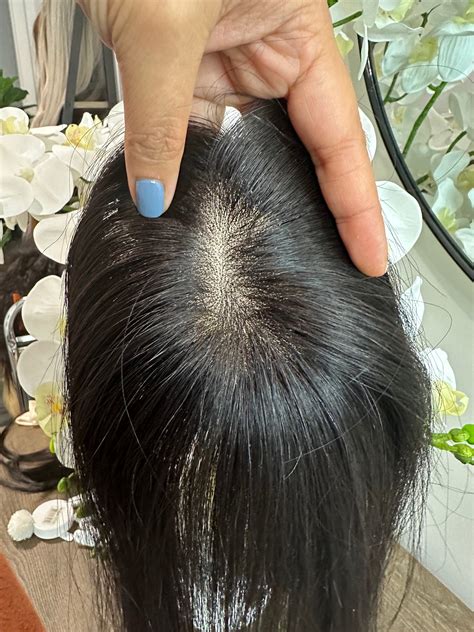Introduction
Losing hair on the top of your head can be a distressing experience, affecting both men and women. Understanding the causes and potential treatments for this condition can empower you to manage it effectively.

Common Causes of Hair Loss on Top of Head
1. Androgenetic Alopecia (AGA)**
- Affects: Around 50% of men and 25% of women worldwide
- Causes: Male pattern baldness in men and female pattern hair loss in women, caused by genetic and hormonal factors
2. Alopecia Areata**
- Affects: 15 per 100,000 people
- Causes: Autoimmune condition where the body attacks its own hair follicles
3. Telogen Effluvium**
- Affects: 5-15% of the population
- Causes: Temporary hair loss triggered by physical or emotional stress, such as illness, childbirth, or grief
4. Trichotillomania**
- Affects: 1-2% of the population
- Causes: Mental health disorder characterized by compulsive hair pulling
Additional Risk Factors
- Age
- Family history of hair loss
- Hormonal imbalances
- Certain medical conditions
- Medications
Symptoms and Diagnosis
- Gradual thinning of hair on the top of the scalp
- Receding hairline
- Round patches of hair loss
- Excessive hair shedding
Diagnosis typically involves a physical examination and review of your medical history. In some cases, a scalp biopsy may be necessary.
Treatment Options for Hair Loss on Top of Head
1. Medical Treatments
– Minoxidil (Rogaine): Topical medication that promotes hair growth
– Finasteride (Propecia): Oral medication that inhibits DHT production, a hormone linked to hair loss
2. Surgical Treatments
– Hair Transplantation: Surgical procedure that involves transplanting hair follicles from the back of the scalp to the top
– Scalp Micropigmentation: Cosmetic procedure that creates the illusion of hair follicles
3. Other Treatments
– Low-Level Laser Therapy: Non-invasive treatment that stimulates hair growth
– Platelet-Rich Plasma (PRP) Injections: Injections of the patient’s own blood to promote healing and hair growth
– Home Remedies: Hair products containing caffeine or rosemary oil may provide some benefits
Preventing Hair Loss on Top of Head
- Manage Stress: High levels of stress can trigger telogen effluvium.
- Avoid Certain Medications: Some medications can cause hair loss as a side effect.
- Protect Hair from Damage: Limit chemical treatments, heat styling, and excessive brushing.
- Healthy Diet: Ensure a balanced diet with adequate protein, iron, and vitamins.
Emotional Impact of Hair Loss on Top of Head
Hair loss can have a significant emotional impact, leading to feelings of self-consciousness, decreased self-esteem, and social anxiety. It is important to seek support from friends, family, or a therapist if you are struggling with the emotional effects of hair loss.
FAQs About Hair Loss on Top of Head
-
Can hair loss on top of the head be reversed?
Yes, in some cases, depending on the underlying cause. Early intervention and consistent treatment are key. -
Is hair loss on top of the head genetic?
AGA is often inherited, but other factors can also play a role. -
What is the best treatment for hair loss on top of the head?
The best treatment depends on the individual’s needs and underlying cause. Medical treatments are often the first line of defense. -
Can I prevent hair loss on top of the head?
Managing stress, protecting hair from damage, and maintaining a healthy diet may help prevent hair loss. -
Is it okay to shave my head if I’m losing hair on top?
Shaving your head will not stop or worsen hair loss. It can be a personal choice based on how you want to manage your appearance. -
What are the emotional effects of hair loss on top of the head?
Hair loss can lead to feelings of self-consciousness, decreased self-esteem, and social anxiety. -
Can I get my money back if a hair loss treatment doesn’t work?
Refund policies for hair loss treatments vary depending on the provider. Always research and ask about refund options before starting treatment. -
What is the latest technology for treating hair loss on top of the head?
Research continues to develop new and innovative treatments, such as gene therapy and stem cell therapy.
